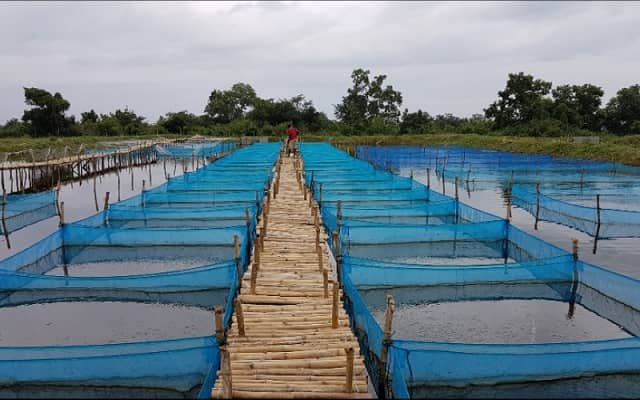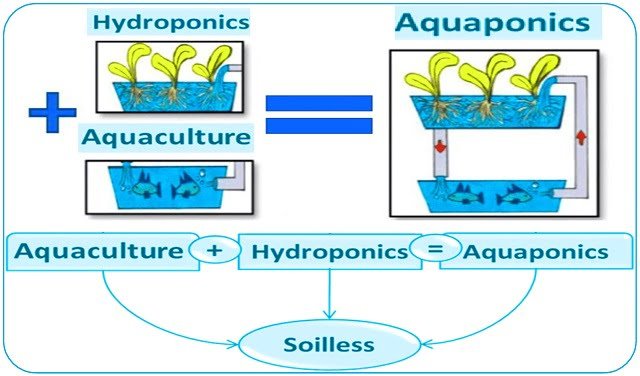
A scientific review describes the problems that have been challenging the design and implementation of biosecurity strategies and protocols in aquaculture, and that require attention in the next decade.
The study was conducted by researchers from FUTUREFISH Co. Ltd., National Aquaculture Group (NAQUA), Food and Agriculture Organization (FAO), Network of Aquaculture Centres in Asia-Pacific (NACA), INVE, and the University of Ghent, and published in the Journal of the World Aquaculture Society.
According to the study, the main challenges for biosecurity in aquaculture include: healthy seed, preparedness and response to emergencies, diagnosis, microbial management at the production level, monitoring of diseases and pathogens, trade in aquatic species, policies and regulatory framework, welfare, research and technological development, antimicrobial resistance, unconventional pathways for pathogen transfer, and progressive management.
The following are the main aspects of the scientific article summarized below, but you can find the link to download the complete article at the end of this post.
Biosecurity
- 1 Biosecurity
- 2 Healthy seed
- 3 Preparedness and emergency response
- 4 Diagnosis
- 5 Microbial management at the production level
- 6 Disease and pathogen monitoring
- 7 Disease reporting and trade
- 8 Policies and regulatory framework
- 9 Fish welfare
- 10 Research and Technology
- 11 Progressive management approach
- 12 Perspectives
- 13 Entradas relacionadas:
Biosecurity in aquaculture consists of practices that minimize the risk of transfer, establishment, and dissemination of pathogens. These include practices to reduce stress in fish, as well as make them less susceptible to pathogens/diseases.
The main components of a holistic and progressive approach to biosecurity management should include, among others:
- Animal management: obtaining healthy populations and optimizing their health and immunity through good breeding practices,
- Pathogen management: preventing, reducing, or eliminating pathogens,
- People management: educating and managing relevant stakeholders,
- Appropriate research, and
- Conducive policy.
Healthy seed
Years of experience have convinced aquaculturists that the use of healthy seed is a high-priority issue in biosecurity to prevent disease outbreaks and subsequent losses.
Pathogen exclusion is a strategy that has shown very good results. The specific pathogen-free (SPF) seed strategy used in aquaculture was copied from the poultry industry developed in the 1950s. The first aquaculture species to enter an SPF process was the white shrimp Penaeus vannamei in the 1980s.
Stay Always Informed
Join our communities to instantly receive the most important news, reports, and analysis from the aquaculture industry.
The most precise definition so far is that specific pathogen-free animals must come from a population that has tested negative for specific pathogens for a period of at least two consecutive years, has been raised in highly biosecure facilities, and has been fed biosecure feed.
Preparedness and emergency response
According to the study, to address emergencies, speed of response, decision-making, and action are required; information and communication management systems; and good science.
The overall goal should be to minimize the risk of disease entry into a country; maintaining an alert or surveillance status will be key to achieving this.
The following investments, among others, are essential to reducing losses from aquatic animal diseases:
- Prevention strategies and going back to basics: good aquaculture and better farm-level biosecurity practices.
- Contingency plans to guide operational and technical response actions to emergency events, including audits of the emergency preparedness response system.
- Risk education at all levels, including at the farm level, to support timely assessment of new or expanding species threats.
Diagnosis
Research efforts in molecular biology have improved our knowledge of pathogen biology, pathogenicity, and behavior, resulting in better and faster diagnostic procedures and tests.
However, molecular techniques have limitations in terms of disease diagnostic capacity and assessment of pathogen viability for risk assessment.
On the other hand, most molecular tests and tools focus on high-value and commercially important aquaculture species.
Microbial management at the production level
The implementation of biosecurity measures includes measures ranging from the exclusion of pathogens to the management of pathogens within the aquaculture facility.
Having efficient protocols and procedures, such as disinfection as the primary tool to kill or inactivate microbial pathogens, is an essential part of biosecurity. However, it is not enough to minimize the risk of an infectious disease occurring, as opportunistic or secondary pathogens may increase during the cultivation period.
Very little is still known about the microorganisms that grow alongside animals in aquaculture systems, regardless of whether efficient biosecurity measures are implemented to prevent the entry of specific pathogens.
The stability and composition of these in situ microbial populations play a determining role in product success. For this reason, managing the microorganisms that grow in the system is as important as biosecurity measures to prevent pathogen entry.
The current perception of microbial management in aquaculture is almost exclusively “use disinfection to kill bad bacteria” and “use probiotics to add good bacteria.”
Disease and pathogen monitoring
Even though some progress has been made in the surveillance of aquatic diseases, many barriers remain to develop effective monitoring systems that sustain national and farm biosecurity.
Many countries are unable to meet the World Organization for Animal Health (WOAH) surveillance standards, necessary to demonstrate and maintain a disease-free status, preventing them from fully utilizing the system established by the World Trade Organization’s (WTO) Sanitary and Phytosanitary (SPS) agreement to minimize disease spread through trade.
The relationship between surveillance investment and intervention costs to mitigate a disease needs to be integrated through economic modeling in the decision-making of aquatic animal health.
Disease reporting and trade
Reporting aquatic animal diseases has two main functions: one related to trade and the other related to the OMC disease control agreement.
An effective disease reporting system requires transparency. However, since notification is largely done through the national Competent Authority, the cost of establishing a national reporting and evaluation system is significant and must be balanced with respect to other development objectives. Despite many initiatives in the last 20 years, many countries lack the experience, capacity, and infrastructure to operate effective disease reporting systems.
Policies and regulatory framework
National strategic planning on aquatic health and biosecurity management is vital to reduce the vulnerability of the aquatic sector to new and emerging diseases, and frequently ad-hoc and reactive solutions to serious transboundary diseases and mass mortality events in aquatic populations.
As a result of the negative externalities associated with aquatic animal diseases, there is an obligation for authorities to implement national legislation related to biosecurity.
This has initiated various international and national/regional biosecurity frameworks. Frameworks related to agreements, declarations, guidelines, and policy plans.
Fish welfare
There is generally no accepted definition of the concept of “animal welfare.” However, the following three dimensions of welfare are frequently cited:
- Function-based: animals can physiologically cope with their environment and enjoy good health.
- Nature-based: animals can lead a natural life, using their natural adaptations.
- Feeling-based: animals should be free from prolonged or intense unpleasant emotional states, such as pain, fear, and hunger.
The relationship between biosecurity and welfare stems from the fact that welfare relates to the health and state of health of animals on the farm. Good welfare increases animals’ ability to resist disease, while poor welfare increases susceptibility to infection and disease.
Research and Technology
It is evident that most of the research in the health of aquatic animals, especially in diagnostic technologies and health management, focuses on commercially important species that are traded internationally.
The primary consideration in the development of national R&D frameworks is who the customer is. Recognizing that customers will be varied, from governments to large-scale industries, emerging businesses, and small producers, it is understood that national R&D frameworks must be holistic and responsive.
Researchers indicate that research should focus on the impacts of climate change on diseases, ecosystem-based management approaches, integrated pest/disease management, assessment and reduction of antimicrobial resistance, anthropogenic impacts, among others.
Progressive management approach
Approximately every three to five years, an unreported pathogen causing new diseases will emerge and spread rapidly, crossing national and international borders.
Usually, a long period elapses before the pathogen is identified, the host range is determined, the pathology is understood, global awareness is established, and effective disease containment and management measures are established.
According to researchers, a good understanding of the factors and pathways that allow the dissemination of exotic and endemic diseases is necessary. They are grouped into four:
Trade in live animals and their products: aquatic animals are food products that are traded globally; in the absence of adequate national biosecurity, pathogens can be transferred along with the movement of the host.
Knowledge of pathogens and their hosts: knowledge about new pathogens, susceptible hosts, and diagnostics slows the rapid development of the sector and the large number of species bred under varied farming systems.
Aquatic health management and disease control: limited or non-existent institutional and technical capacities, including the application and implementation of international guidelines and best biosecurity practices.
Changes in ecosystems: aquatic ecosystems are dynamic and change through direct human activity and indirect human impacts. In such dynamic conditions, aquaculture is limited by the physiology of animals, the emergence of opportunistic pathogens, and the geographical range shift of wild populations, microbes, and parasites.
Perspectives
Although the aquaculture sector has suffered incursions of pathogens and disease outbreaks that caused significant production and revenue losses, to date, there is still a lack of evidence-based knowledge about the economic (and subsequent social) impacts of diseases in aquaculture.
There are several challenges to collecting data related to economic and social losses from aquatic disease episodes. These include the lack of uniform data collection methods and standardized protocols for data collection across all countries and regions, which can result in inconsistent and incomplete data.
While there is enormous potential for aquaculture to continue its rapid growth and increase its contribution to global food security, the sustainable growth of aquaculture is threatened by both known diseases that we cannot effectively control and new diseases that can become pandemics.
Recent pandemics have shown that global production systems are epidemiologically connected, and as a result, diseases of cultivated aquatic species pose a shared global threat that demands global solidarity.
Contact
Rohana Subasinghe
FUTUREFISH Co. Ltd.,
Suit LG 11, St James’s Place,
London,SW1A1NP,
United Kingdom.
Email: rohana@futurefish.org
Reference (open access)
Subasinghe, R., Alday-Sanz, V., Bondad-Reantaso, M. G., Jie, H., Shinn, A. P., & Sorgeloos, P. (2023). Biosecurity: Reducing the burden of disease. Journal of the World Aquaculture Society, 1– 30. https://doi.org/10.1111/jwas.12966
Editor at the digital magazine AquaHoy. He holds a degree in Aquaculture Biology from the National University of Santa (UNS) and a Master’s degree in Science and Innovation Management from the Polytechnic University of Valencia, with postgraduate diplomas in Business Innovation and Innovation Management. He possesses extensive experience in the aquaculture and fisheries sector, having led the Fisheries Innovation Unit of the National Program for Innovation in Fisheries and Aquaculture (PNIPA). He has served as a senior consultant in technology watch, an innovation project formulator and advisor, and a lecturer at UNS. He is a member of the Peruvian College of Biologists and was recognized by the World Aquaculture Society (WAS) in 2016 for his contribution to aquaculture.




